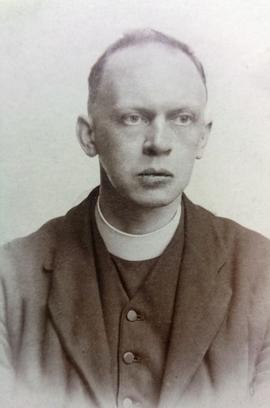Rope, Henry Edward George, 1880-1978, Catholic priest
- IE CA DB/HEGR
- Persoon
- 23 October 1880-1 March 1978
Henry Edward George Rope was a writer, poet, editor, and priest widely known in the Catholic Church for his traditionalist views. He was the elder brother of Margaret Agnes Rope, a stained-glass artist, a nephew of Ellen Mary Rope, a sculptor, and George Thomas Rope, a painter, and naturalist, as well as a cousin of M.E. Aldrich Rope, another stained-glass artist. He was ordained at St. John Lateran in Rome on 27 February 1915. He served in the Shrewsbury Diocese up until 1937, in which year, on 30 October, he took up the position of archivist in the Venerable English College in Rome. His positions as a priest included Chester St Werburgh 1915-17, Crewe 1917-18, Plowden, Shropshire 1918-24, Market Drayton 1924-25, and chaplain at Mawley Hall (near Cleobury Mortimer) 1925-37. His tenure in Rome was interrupted by the Second World War, during which he served as a chaplain at the Convent of the Sacred Heart in Albrighton Hall, Shrewsbury (1940-44). He re-joined the Venerable English College and on his return to Rome after the war in 1946, again served as archivist, until December 1957. Returning to England, he settled at the Carmelite Monastery, Quidenham, Norfolk, where his sister Margaret Agnes Rope, the stained-glass artist, had died some four years previously. Due to his writings and his work as archivist at the Venerable English College in Rome, he was well known in his lifetime, particularly within church circles. He nurtured friendships with many prominent lay Catholics and clergy which in turn generated a wealth of correspondence. Aside from Benedict Williamson (1868-1948), a church architect and later Catholic priest, on whom he wrote a two-part monograph, Rope is associated with G.K. Chesterton, Hilaire Belloc, John Hawes, and many others. Henry Rope died in London on 1 March 1978 and was buried in the graveyard attached to the Church of St. Michael and the Holy Family in Kesgrave, Suffolk.










